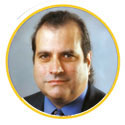CosmoCom's Steve Kowarsky directs the company's rapidly-expanding, worldwide marketing efforts. Its flagship product, CosmoCall Universe�, is now said to be the most selected hosted contact center platform by tier-one service providers in the world. Previously, the Harvard-educated Kowarsky was the second U.S. employee hired by Comverse Technology, an Israeli/US startup that grew to $300-million-a-year in revenue by the time Kowarsky left for the fledgling CosmoCom in 1997.
Richard "Zippy" Grigonis recently spoke with Kowarsky about CosmoCom, UC and contact centers.
RG: One of our big topics this month is UC and call/contact centers. I know CosmoCom has extensive offerings in this area.
SK: We have the original IP contact center technology. Furthermore, our contact center has always been a unified communications system, but it's been applied not just to internal communications such as most UC platforms, but to communication between customers and the enterprise. We call our technology 'Unified Customer Communication'.
UC means a lot of different things. It depends on who you're talking to and what vested interest they have in the industry. The whole concept of unity can be applied in many different ways and on many different levels. For example, we think that one of the most important parts of UC when it comes to the call center, is unifying an enterprise's workforce as part of the mission of customer service, support and satisfaction.
In other words, the call center is not just 200 people who work in cubicles all day. If that's what the call center is, then you don't have Unified Customer Communication; instead, you have 'Separated Customer Communication' - essentially a 'dis-unified' customer communication. So in order for customer communication to be unified, it has to be something that addresses a much broader selection of knowledge workers and people in the enterprise, who are somehow involved in the process of supporting and fulfilling what customers want and need in their business relationship with the enterprise.
RG: So any enterprise employee, anywhere, can be drawn into a call center event?
SK: We think that the call center is evolving and expanding to include the whole enterprise. That's what it all comes down to. The intelligent routing capabilities of ACDs [Automated Call Distributors] are starting to go way beyond just 'how to route the calls among the 200 people who live in cubicles'. Now we've got to be able to route calls among the 2,000 or 20,000 people that live in the enterprise, most of whom don't spend their day taking calls in a so-called call center. But many of these people are, at some point and in some way, the right person at the right time to meet the need and resolve the issue of a customer.
Call centers want first-call resolution - it's their Holy Grail. To achieve a high rate of first-call resolution, you need real Unified Customer Communication, in the sense of having your customer communication and intelligent routing up and running, and giving that access to all knowledge workers in an enterprise. When you do that you improve call center performance and customer satisfaction. We think that's an important idea, and it should be part of the whole concept of unified communications.
Unified Communications Communications Magazine Table of Contents





